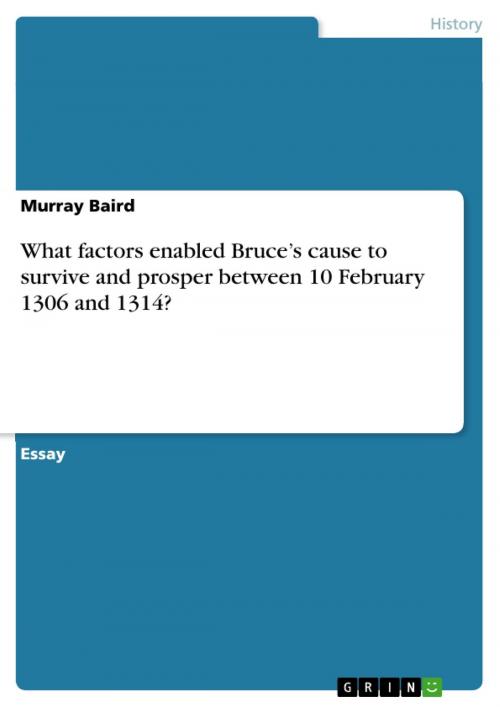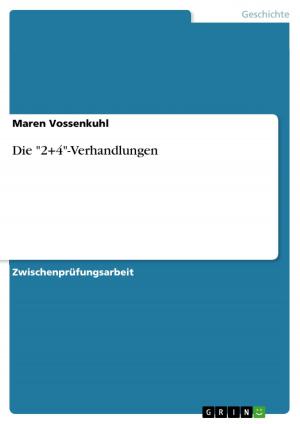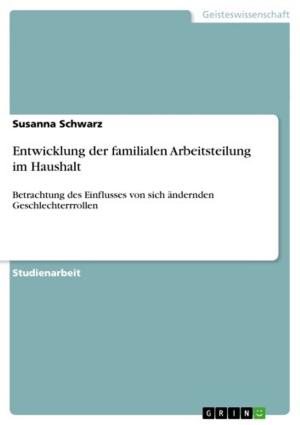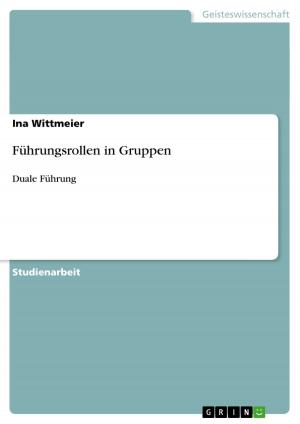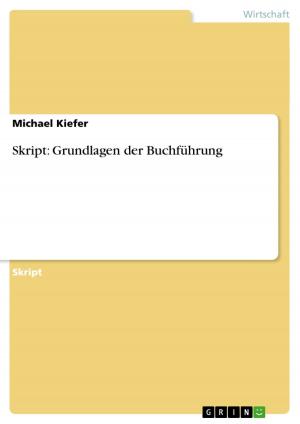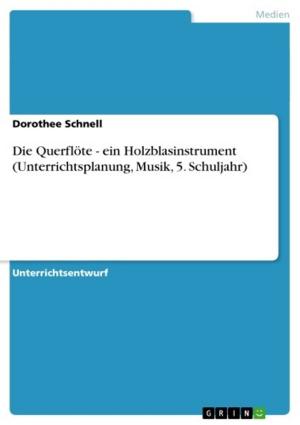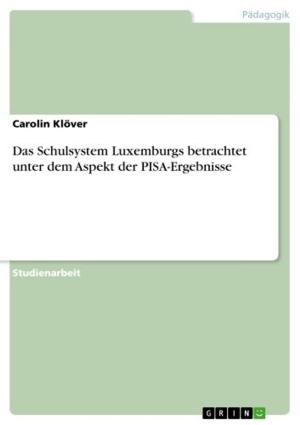What factors enabled Bruce's cause to survive and prosper between 10 February 1306 and 1314?
Nonfiction, History, European General| Author: | Murray Baird | ISBN: | 9783656295044 |
| Publisher: | GRIN Verlag | Publication: | October 23, 2012 |
| Imprint: | GRIN Verlag | Language: | English |
| Author: | Murray Baird |
| ISBN: | 9783656295044 |
| Publisher: | GRIN Verlag |
| Publication: | October 23, 2012 |
| Imprint: | GRIN Verlag |
| Language: | English |
Essay from the year 2003 in the subject History Europe - Other Countries - Middle Ages, Early Modern Age, grade: 2c, University of Stirling, course: Scotland in the time of Wallace and Bruce , language: English, abstract: The factors which enabled Bruce's cause to survive and prosper between the murder of John Comyn on 10 February 1306 and 1314 are multifarious and inter-linked. However, these factors all revolve around the separate, converging movements of Bruce seeking support for the seizure of the Scottish throne and of a patriotic cause associated with the community of the realm seeking to overthrow English overlordship claims. These movements merged as one, assisted by Robert I, due to factors including the political polarization of Scotland created by the murder of Comyn within the wider scenario of the Anglo-Scottish war. Bruce's ability to survive and prosper depended on his political and military acumen in taking advantage of existing political divisions and the enlisting of popular support bolstered by English repression. The death of Edward I and the comparative ineptitude of Edward II were fortuitous factors which gave Bruce time and space to pursue his Scottish opponents to defeat or submission. Similarly, the settlement of the civil war allowed Robert to concentrate on the remaining vestiges of English control in Scotland and take the war into the north of England. By doing so Robert enhanced his kingship through victory. The reinstatement of Scottish kingship as the centrepiece of Scottish independence exuded by the community of the realm, support from a nationalist clergy and the use of propaganda allowed the Bruce cause to prosper, demonstrated further by parliamentary activity and international diplomacy. The final contributory factors, and the ultimate convergence of the Bruce cause with the patriotic cause, emanate from the outcome of the battle of Bannockburn.
Essay from the year 2003 in the subject History Europe - Other Countries - Middle Ages, Early Modern Age, grade: 2c, University of Stirling, course: Scotland in the time of Wallace and Bruce , language: English, abstract: The factors which enabled Bruce's cause to survive and prosper between the murder of John Comyn on 10 February 1306 and 1314 are multifarious and inter-linked. However, these factors all revolve around the separate, converging movements of Bruce seeking support for the seizure of the Scottish throne and of a patriotic cause associated with the community of the realm seeking to overthrow English overlordship claims. These movements merged as one, assisted by Robert I, due to factors including the political polarization of Scotland created by the murder of Comyn within the wider scenario of the Anglo-Scottish war. Bruce's ability to survive and prosper depended on his political and military acumen in taking advantage of existing political divisions and the enlisting of popular support bolstered by English repression. The death of Edward I and the comparative ineptitude of Edward II were fortuitous factors which gave Bruce time and space to pursue his Scottish opponents to defeat or submission. Similarly, the settlement of the civil war allowed Robert to concentrate on the remaining vestiges of English control in Scotland and take the war into the north of England. By doing so Robert enhanced his kingship through victory. The reinstatement of Scottish kingship as the centrepiece of Scottish independence exuded by the community of the realm, support from a nationalist clergy and the use of propaganda allowed the Bruce cause to prosper, demonstrated further by parliamentary activity and international diplomacy. The final contributory factors, and the ultimate convergence of the Bruce cause with the patriotic cause, emanate from the outcome of the battle of Bannockburn.
